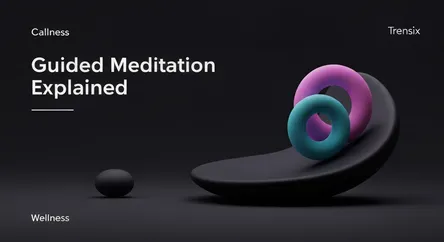Wellness
Guided Meditation Explained

An introduction to guided meditation, a popular practice for reducing stress, improving focus, and enhancing overall well-being.
What is it?
Guided meditation is a practice where an experienced teacher guides you through a meditation session, either in person or via audio or video recordings. The guide's voice offers instructions to help you focus your mind and relax, often using techniques like visualization, body scans, or specific breathing exercises. This structured format is especially useful for beginners as it helps prevent the mind from wandering, making the practice more accessible than unguided meditation.
Why is it trending?
Guided meditation's popularity has soared due to rising stress levels and the increasing desire for mental wellness tools. Its accessibility through numerous mobile apps has made it a convenient way for people to practice anywhere, anytime. A growing body of scientific research confirms its benefits for mental and physical health, boosting its credibility. As mindfulness becomes a mainstream health practice, guided meditation serves as an easy and effective entry point for millions seeking to manage stress and improve their focus.
How does it affect people?
Regularly practicing guided meditation has numerous positive effects. It is proven to reduce stress and anxiety by lowering cortisol levels and calming the nervous system. It can lead to improved sleep quality, enhanced focus, and better emotional regulation. On a neurological level, it can decrease activity in the brain's "me center" (the default mode network), which is associated with mind-wandering and negative self-talk. This helps individuals feel more present, calm, and self-aware, fostering a greater sense of overall peace and well-being.